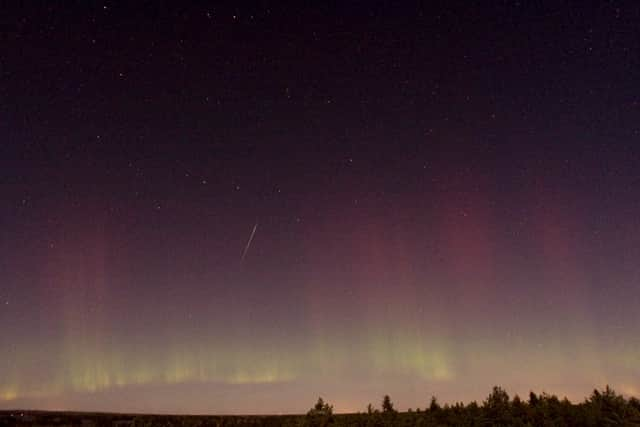Draconids meteor shower: where to see them in the UK, when is the peak - how to see shooting stars
and live on Freeview channel 276
Every October, the Draconid meteor shower lights up the night sky. Though its intensity is hard to predict, the shower has provided viewers with hundreds of "shooting stars" per hour in the past.
But what do you need to know to take full advantage of what could be a breathtaking celestial display and, when does this year's Draconid meteor shower peak? Here is all the information you require.
What is the Draconid meteor shower?
Advertisement
Hide AdAdvertisement
Hide AdThe Draconid meteor shower, first discovered in 1900 by the astronomer Michel Giacobini (the shower was initially named the Giacobinids), is an annual meteor shower that occurs when the Earth passes through the debris left behind by the comet 21P/Giacobini-Zinner.
Meteor showers are caused by particles of ice and rock - often as small as a grain of sand - hitting the Earth’s atmosphere nearly 60 miles above our heads. The friction generated as the particles move through the atmosphere creates streaks of light in the night sky as they burn up.
The shower gets its name from the constellation Draco (the Dragon), as the meteors appear to originate from this part of the sky when viewed from Earth.


When is the best time to see them?
The meteors will be visible in the night sky from Friday 6 October, but they will gradually grow in intensity until they peak in intensity on the evening of Monday 8 October.
Advertisement
Hide AdAdvertisement
Hide AdThe best time to observe the Draconid meteor shower is typically in the early evening or just after sunset, unlike many other meteor showers that are best viewed during the pre-dawn hours.
This is because the radiant point (the point in the sky from which the meteors appear to originate) is high in the sky shortly after sunset.
To maximize your chances of seeing Draconid meteors, find a dark location away from city lights, give your eyes time to adjust to the darkness, and look toward the northern sky near the Draco constellation.
Thankfully, budding stargazers need not splash out on expensive tech to see the Draconids; they will be visible with the naked eye. You may need some patience though, and you’ll also need to be alert, with the shooting stars zipping across the sky at an incredible 41 miles per second.
Advertisement
Hide AdAdvertisement
Hide AdKeep in mind that the Draconid meteor shower is not as reliable or as prolific as some other meteor showers like the Perseids or Geminids, so it's a good idea to check the predictions for each year to determine whether it's worth observing.
How ‘spectacular’ will they be?
The Draconid meteor shower is known for its unpredictable nature. Most meteor showers have a well-defined peak, but the Draconids can vary widely in intensity from year to year.
In some years, there can be a significant outburst of meteors, with hundreds or even thousands of meteors per hour, while in other years, the shower may be relatively weak.
While the Draconid meteor shower previously produced some of the most spectacular astronomical events of the 20th century - including a ‘meteor storm’ in 1933 when 500 meteors per minute were seen in the skies above Europe - the event hasn’t been especially vibrant in recent years.
Advertisement
Hide AdAdvertisement
Hide AdAs the Earth rarely comes ‘close’ (in astronomical terms) to the comet, the Draconid meteor shower is classified by Nasa as “weak”, with the space agency expecting 10 to 20 meteors per hour at its peak in an average year.
